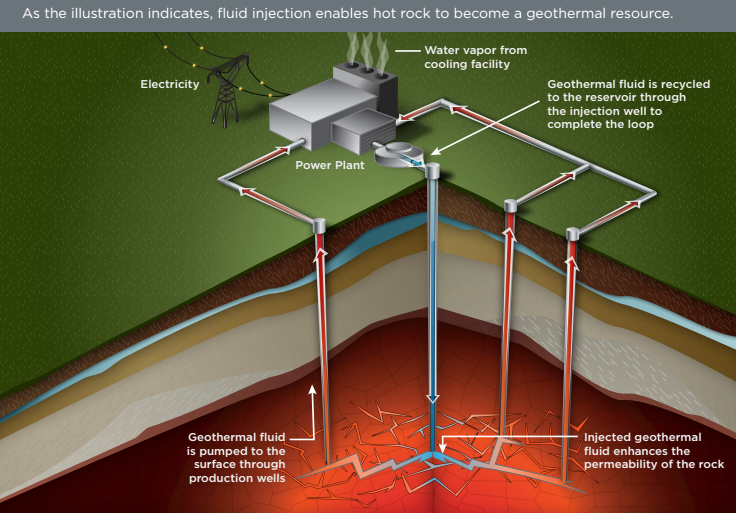Posted at 18:14h
in
Energy
by Shen Ge
What is Geothermal?
Geothermal has been used in hot water heating since antiquity. In Europe, the Romans piped hot underground water and steam for public baths. On the other side of the globe, the Japanese have luxuriated since the Heian era in hot-spring o
nsens which populate their volcanic archipelago. Yet, as a source of renewable energy, geothermal electricity has gone largely ignored as fortunes have been heaped on its rivals.
Presently, most geothermal electricity directly taps into volcanic areas. It is just a matter of directing it and using it—not a project that needs state subsidy. As the US DOE states, “Present geothermal power generation comes from hydrothermal reservoirs, and is somewhat limited in geographic application to specific ideal places in the western U.S. This represents the 'low-hanging fruit' of geothermal energy potential.”
However, this is limiting. In most places, you have to dig deep to get at useful amounts of heat, and it is certainly true that exploration and drilling costs have remained stubbornly high for the deeper wells needed outside hot-spring regions, and that developers have been slow to devise better ways of extracting heat from such rocks, even if wells are sunk.
Hydraulic Fracking for Geothermal Energy
[caption id="attachment_292" align="aligncenter" width="736"]

As the US DOE illustrates, fluid injection allows previously untapped hot rocks to become a geothermal source (Image: US Department of Energy).[/caption]
An important advance has been made—or, rather, borrowed from the oil and gas industry. This is the use of hydraulic fracturing ("fracking"), in which, in the case of oil or gas, water is injected into rocks whose hydrocarbons are too tightly bound to the rocky matrix to rush to the surface on its own. The high-pressure water shatters the matrix, releasing the bound hot rocks. Hydraulic fracking for geothermal energy works in a similar manner.
Interested in more of my posts and other writings outside of Impact Hound? Follow me on Twitter:
@shenge86
 As the US DOE illustrates, fluid injection allows previously untapped hot rocks to become a geothermal source (Image: US Department of Energy).[/caption]
An important advance has been made—or, rather, borrowed from the oil and gas industry. This is the use of hydraulic fracturing ("fracking"), in which, in the case of oil or gas, water is injected into rocks whose hydrocarbons are too tightly bound to the rocky matrix to rush to the surface on its own. The high-pressure water shatters the matrix, releasing the bound hot rocks. Hydraulic fracking for geothermal energy works in a similar manner.
Interested in more of my posts and other writings outside of Impact Hound? Follow me on Twitter: @shenge86
As the US DOE illustrates, fluid injection allows previously untapped hot rocks to become a geothermal source (Image: US Department of Energy).[/caption]
An important advance has been made—or, rather, borrowed from the oil and gas industry. This is the use of hydraulic fracturing ("fracking"), in which, in the case of oil or gas, water is injected into rocks whose hydrocarbons are too tightly bound to the rocky matrix to rush to the surface on its own. The high-pressure water shatters the matrix, releasing the bound hot rocks. Hydraulic fracking for geothermal energy works in a similar manner.
Interested in more of my posts and other writings outside of Impact Hound? Follow me on Twitter: @shenge86


